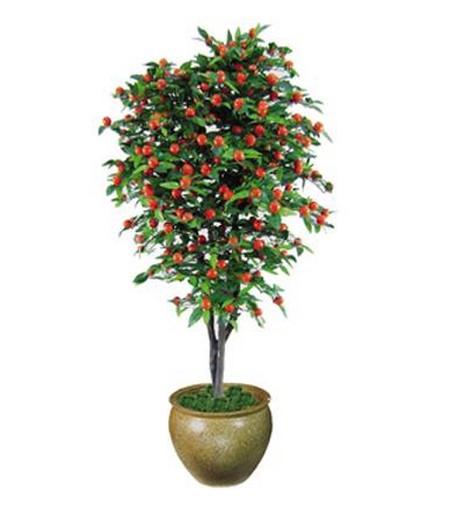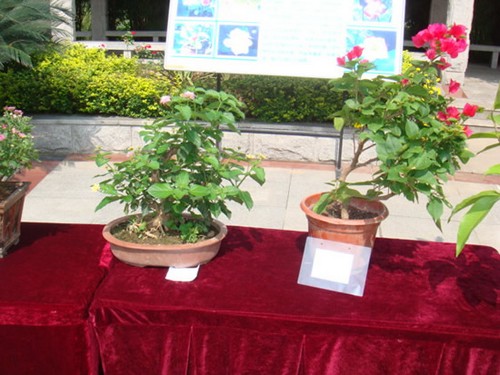Modeling method of Bauhinia bonsai
Vitex negundo, that is, Vitex negundo, is widely distributed in China and has strong vitality. It is one of the commonly used miscellaneous tree species for bonsai production. Its adaptability is very strong, and the requirements for soil are not strict. Potted bauhinia is better with humus soil with loose texture and good water permeability, and the pot pot is suitable for soil basin or cement pot. Before planting, cut off the injured roots and overlong roots, and cut off the steep long branches and overdense branches.

Bauhinia laozhang, very ancient, natural Shili dry, hard ossification surface, particularly eye-catching, but not long pitch, large leaves. In order to enhance our strengths and avoid weaknesses, we need to start with the following aspects in styling:
1. Tie scissors
The author's modeling principle for Bauhinia bonsai is rough binding and fine cutting. Before pruning, according to the different pile shape, cut off all the waste branches (overlapping branches, cross branches, head-on branches, whorled branches, etc.) and fasten the remaining branches according to different branch directions, and pay attention to two points when banding:
First, don't wait for the branches to grow too thick, for the bauhinia branches are too thick and brittle and easy to break.
Second, do not touch the bud when banding, otherwise, there will be a lack of branches and leaves to form a "slippery dry" in the future. After one or two years, after the branches are in harmony with the thickness of the trunk, leave one or two branches and move the first shearing, and the secondary and tertiary branches should be gradually changed in thickness, and the transition will be natural.
2. Shrinking leaves
In order to reduce the leaves of bauhinia, three methods can be used:
(1) picking leaves. It is usually held in early summer, early autumn or before the exhibition. When picking leaves, do not leave any leaves (be careful not to remove the leaf buds at the root of the petiole). After picking leaves, we should appropriately strengthen fertilizer and water management without shading. New leaves will be issued in about half a month, and the new leaves are only 1/2 of the size of the original leaves.
(2) topping
Topping is to remove the new buds from the main branch. In the growing period of Bauhinia bonsai, you should often hit the top and pick the heart.
(3) controlling fertilizer and water
The so-called fertilizer control means that the formed bauhinia bonsai is given only water but not "soup" before the exhibition or during the viewing period. At the same time, watering should also be controlled so that the basin soil is semi-wet and semi-dry.
Bauhinia bonsai has few diseases and insect pests, occasionally harmed by aphids, which can be killed by Didi solution.
Time: 2019-06-12 Click:
- Prev

Pruning method of kumquat bonsai
There is a big difference in cultivation methods between potted kumquat and garden kumquat, and the pruning method also has its own characteristics. After March, most of the fruits of kumquat fall off naturally, and the remaining fruits are picked manually to save nutrients. At the same time, dense branches, cross branches, some overgrown branches and no light branches in the inner chamber are removed.
- Next

Propagation mode of potted five-color plum
There are often multicolor changes in a cluster of inflorescences, so the alias is also called five-colored plum and colorful flowers; at the same time, the branches and leaves contain a special irritating smell, so Ma Yingdan also has aliases such as smelly grass and smelly Jinfeng, flowering from June to October. Potted five-color plum should turn the pot before leaving the house in spring, and adequate base fertilizer should be applied.
Related
- Fuxing push coffee new agricultural production and marketing class: lack of small-scale processing plants
- Jujube rice field leisure farm deep ploughing Yilan for five years to create a space for organic food and play
- Nongyu Farm-A trial of organic papaya for brave women with advanced technology
- Four points for attention in the prevention and control of diseases and insect pests of edible fungi
- How to add nutrient solution to Edible Fungi
- Is there any good way to control edible fungus mites?
- Open Inoculation Technology of Edible Fungi
- Is there any clever way to use fertilizer for edible fungus in winter?
- What agents are used to kill the pathogens of edible fungi in the mushroom shed?
- Rapid drying of Edible Fungi

